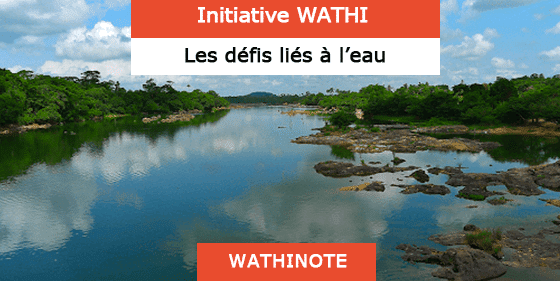

Author : Leah Rodriguez
Affiliated organization : Global Citizen
Site of publication : globalcitizen.org
Type of publication : Article
Date of publication : 7, October 2019
Nigeria is one of the 46 countries in sub-Saharan Africa that have been most affected by the global water crisis. Of the 783 million people who are without access to clean water, 40% live in sub-Saharan Africa, and more than 320 million people lack access to safe drinking water.
Poverty is a huge barrier to access to water and sanitation, and most of the world’s poorest countries are in sub-Saharan Africa. Natural disasters, increased pollution, and a lack of resources are all driving forces of the water crisis in sub-Saharan Africa.
Access to Water Supply and Sanitation
About one-fourth of those defecating in the open in the world live in sub-Saharan Africa and they spend an average of 2.5 days per year trying to find a private location to defecate. Women spend extra time looking for a safe place to go and are put can experience gender-based violence in the process.
The use of contaminated drinking water and poor sanitary conditions results in increased vulnerability to water-borne diseases, including diarrhea, cholera, dysentery, and typhoid. When a person doesn’t have access to clean water and sanitation, they are also at risk of decreased school attendance, missed workdays, malnutrition, and poverty. When girls and women lack access to safe sanitation and water, their education suffers because they experience period poverty.
Sanitation Gap
The number of people living in sub-Saharan Africa has nearly doubled in the last 25 years, but access to sanitation and water has improved minimally, leaving millions behind, according to the UN.
In countries in sub-Saharan Africa with the best water coverage rates, as many as 1 in 4 people still lack adequate sanitation. Rural residents are often worse off than urban residents when it comes to lack of access to water and sanitation, and funding is uneven and insufficient in the area, according to UNICEF.
Most overseas development aid goes to countries that are already doing well, and while water and sanitation access is far behind in rural areas, both external and domestic funding goes primarily to urban systems.
Emergencies and Disasters
In sub-Saharan Africa, 66% of people 300 million people live in areas with little to no rainfall, which leads to failed crops and agricultural efforts.
Climate change is making water availability less predictable in sub-Saharan Africa, speeding up hunger and health crises, increasing poverty, and lowering incomes for entire populations. Droughts have been drier and lasting longer in recent years, in part due to climate change.
Water Resources
Africa’s rising population is driving demand for water and decreasing the availability of water resources. Armed conflict has also increased worldwide over the last decade, displacing millions of people and presenting a challenge for host communities that need to supply basic needs, including water and sanitation.
Infrastructure to pipe water from fresh clean sources in dry areas or drilling for water is too expensive and forces communities to resort to dangerous alternatives.
Whats Being Done?
Global Goal 4 aims to ensure availability and sustainable management of water and sanitation for all by 2030. Several organizations are working to meet this goal through programs that promote behavior change and education.
The Water Supply and Sanitation Collaborative Council (WSSCC), for example, runs the world’s first and only fund dedicated to “improving sanitation and hygiene through community-based, publicly-supported and commercially operated programs, reaching millions of people.”
The charity United Purpose works across sub-Saharan Africa to empower women and communities to voice their rights, promote good sanitation and hygiene to reduce water-borne diseases.
Les Wathinotes sont soit des résumés de publications sélectionnées par WATHI, conformes aux résumés originaux, soit des versions modifiées des résumés originaux, soit des extraits choisis par WATHI compte tenu de leur pertinence par rapport au thème du Débat. Lorsque les publications et leurs résumés ne sont disponibles qu’en français ou en anglais, WATHI se charge de la traduction des extraits choisis dans l’autre langue. Toutes les Wathinotes renvoient aux publications originales et intégrales qui ne sont pas hébergées par le site de WATHI, et sont destinées à promouvoir la lecture de ces documents, fruit du travail de recherche d’universitaires et d’experts.
The Wathinotes are either original abstracts of publications selected by WATHI, modified original summaries or publication quotes selected for their relevance for the theme of the Debate. When publications and abstracts are only available either in French or in English, the translation is done by WATHI. All the Wathinotes link to the original and integral publications that are not hosted on the WATHI website. WATHI participates to the promotion of these documents that have been written by university professors and experts.
